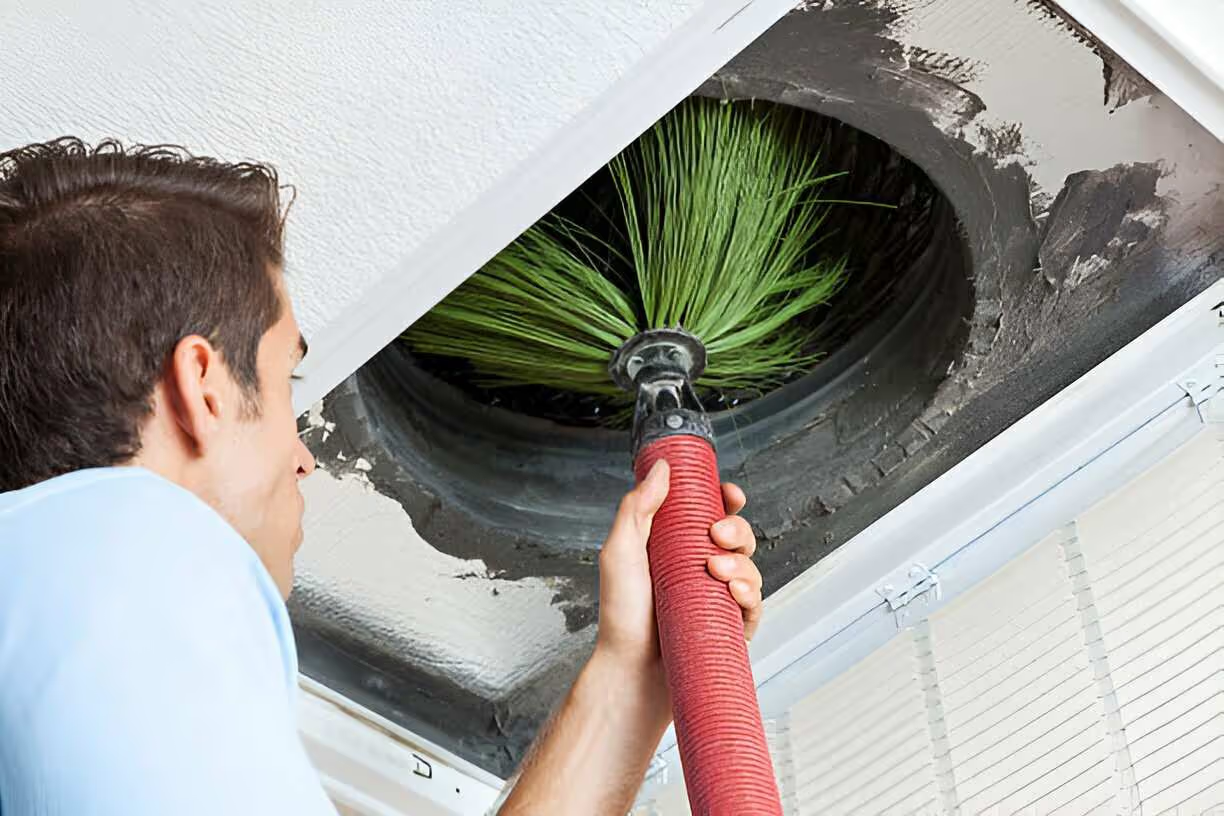Ductwork in Lake Wales, FL


Why ductwork matters in Lake Wales
- High humidity increases the risk of condensation inside ducts, which can lead to mold growth, reduced airflow, and degraded indoor air quality.
- Older or undersized ducts are common in the area and often cause uneven cooling, short cycling, and excessive strain on HVAC equipment.
- Properly sealed and insulated ducts reduce energy loss in attics and unconditioned spaces, which matters in central Florida where attic temperatures regularly exceed outdoor temperatures.
Common ductwork issues in Lake Wales homes
- Leaky connections and seams causing conditioned air loss and higher cooling costs.
- Undersized or poorly routed ducts leading to hot or cold rooms and noisy registers.
- Insufficient insulation in attic ducts causing heat gain and condensation.
- Collapsed or damaged flexible ducts from pests, age, or poor installation.
- Restricted airflow from blockages, mastic failure, or bent sheet metal.
- Contaminants and microbial growth in damp ducts affecting allergy and respiratory symptoms.
Duct design and sizing for optimal airflow
Design and sizing are the foundation of effective ductwork. Proper design matches duct sizes, register locations, and static pressure targets to the cooling capacity of your air handler and local load requirements influenced by Lake Wales climate.
- Load assessment: Calculates cooling needs based on square footage, insulation, window orientation, and Florida sun exposure.
- Manual D and Manual J principles: Used to size ducts and determine airflow requirements for each room.
- Routing considerations: Shorter, straighter runs with properly sized trunk and branch ducts minimize pressure drop and reduce noise.
- A correctly sized and designed system delivers balanced airflow, longer equipment life, and consistent comfort throughout the home.
New installation and retrofit options
- New duct installation: Full-system design and installation for new construction or major HVAC upgrades, with options for rigid sheet metal, fiberglass-lined ducts, or high-performance insulated flexible duct depending on application.
- Duct retrofit: Reconfiguring or replacing problematic sections, converting undersized ducts, adding return pathways, or replacing flexible ducts in attics where heat gain is severe.
- Partial replacement: Targeted replacement of the worst-performing sections to restore performance cost-effectively.
Duct sealing and insulation
Sealing and insulating ducts yields immediate efficiency and comfort improvements in Lake Wales homes.
- Sealing methods: Mastic sealant and UL-rated foil tape at joints, boots, and seams. Properly sealed ducts reduce leakage and improve system capacity.
- Insulation: R-6 or higher insulated ducts in attics and unconditioned spaces limit heat gain and reduce condensation risk in humid summers.
- Vapor control: Where condensation risk is high, adding proper vapor barrier and ensuring insulation continuity prevents moisture accumulation.
Airflow testing and balancing
Airflow testing verifies system performance; balancing ensures each room receives the designed airflow.
- Diagnostics include static pressure measurement, flow hood testing at registers, and zone-by-zone airflow verification.
- Balancing adjusts dampers, registers, and sometimes re-sizes branches to meet target CFM for each room.
- Results: Reduced hot spots, quieter operation, improved humidity control, and more even temperatures.
Materials, access, and construction considerations
- Material options: Galvanized sheet metal for durability, insulated flex for ease in tight spaces, and fabric ducting in specialty applications.
- Access: Attic and crawl space access affects installation approach. In Lake Wales, where many ducts run through unconditioned attics, priority is given to robust insulation and moisture protection.
- Structural coordination: New duct runs may require coordination with roof, ceiling, and framing members to avoid invasive work while maintaining performance.
Cleaning, repair, and microbial remediation
- Cleaning: Removal of dust, debris, and light microbial growth through agitation and HEPA-filtered vacuuming for improved air quality.
- Repairs: Patch or replace damaged sections, reseal seams, and reinforce hangers and supports.
- Remediation: If moisture has caused significant mold, address the moisture source, replace contaminated sections, and follow industry remediation practices to restore safe indoor air.
Impact on system efficiency and indoor air quality
- Efficiency: Properly sealed and insulated ducts can reduce cooling energy loss by up to 20-30% in typical Florida attic installations, lowering operating costs and reducing wear on compressors.
- Equipment life: Balanced airflow and correct static pressure reduce cycling and stress on the air handler and compressor.
- Indoor air quality: Sealing prevents attic dust, pollen, and rodent contaminants from entering conditioned spaces. Addressing moisture and mold improves respiratory comfort for sensitive occupants.
Cost estimates and typical timelines
- Cost factors: Scope of work, accessibility, materials chosen, and whether full replacement or targeted repairs are required. Retrofits or partial repairs are generally less expensive than full system replacement.
- Timelines: Small repairs and sealing projects can often be completed in a day. Full duct design, replacement, and balancing for an average single-family home usually take 2 to 5 days depending on complexity and attic accessibility.
- Value consideration: Investments in sealing, insulation, and balancing typically pay back through energy savings, improved comfort, and extended HVAC lifespan.
Warranty and maintenance recommendations
- Warranties: Look for workmanship warranties on sealing and installation and manufacturer warranties on new duct components or specialized insulation. Verify coverage in writing when applicable.
Routine maintenance:
- Inspect visible ducts annually for damage, disconnected sections, and insulation problems.
- Schedule airflow testing and balancing every 3 to 5 years or after major HVAC work.
- Clean ducts if occupants experience allergy symptoms, or after water intrusion events.
- Maintain attic ventilation and insulation to reduce duct heat gain and moisture risk.
- Seasonal checks: In Lake Wales, pre-summer inspections help ensure your system handles peak cooling loads without increased humidity or noise.
For Lake Wales homes, investing in properly designed, sealed, insulated, and balanced ductwork delivers measurable comfort, energy, and indoor air quality benefits. Addressing common local issues like attic heat, high humidity, and older installations will reduce cooling costs, extend equipment life, and provide more consistent comfort throughout the house. Use these guidelines to evaluate options and prioritize the ductwork improvements that deliver the biggest impact for your home.
Service Areas


